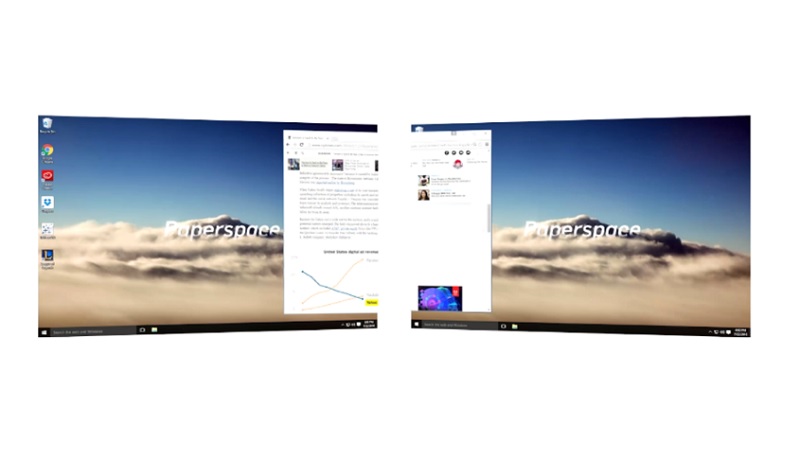Paperspace has raised $4 million in funding so that enterprise users can run a full computer in the cloud and stream it to any device.
The startup aims to bring a slick virtual desktop experience to the enterprise. Paperspace is already being used by architects, designers, lawyers, accountants, and researchers who can benefit from running a high-performance computer in the cloud. Customers pay a monthly subscription fee.
The New York company went through the Y Combinator incubator last year and has raised $4 million in funding from institutional investors, including Ludlow Ventures, Data Collective, and Initialized Capital, as well as high-profile individuals, including Jeff Carr, one of the cofounders of cloud hosting company DigitalOcean.
Cofounder Dillon Erb is a trained architect who needed to run complex simulations on traditional buildings. Normally, this would require a computer that costs more than $4,000. Even then, running programs on these machines could take hours or days.
AI Weekly
The must-read newsletter for AI and Big Data industry written by Khari Johnson, Kyle Wiggers, and Seth Colaner.
Included with VentureBeat Insider and VentureBeat VIP memberships.
“We can run a full Windows computer in the cloud with our virtual desktop and stream it to a web browser,” said Erb, in an interview with VentureBeat. “It’s really for anyone who needs access to a more powerful computer.”

Above: Paperspace has raised $4 million for virtual desktops.
The company launched its initial service last summer, and it has since evolved to offer a more software-centric experience. You don’t need to use any particular hardware, as in the past. To sign up, all a customer needs to do is go the website, create an account, and fire it up.
The team has built out more server capacity and improved its streaming algorithm, and Paperspace now has the capacity to support public users, as it expands beyond its private beta test. Erb said the company is running its own data centers with its own custom-configured graphics processing units (GPUs).
“The experience we deliver is a latency of about 10 milliseconds,” Erb said. “It’s amazing, and it’s a test to see whether a machine is running locally or on our technology.”
Features include the ability to run multiple monitors in a web browser, easy integration with virtual private networks, and, for enterprise clients, seamlessly deployment in an existing ActiveDirectory environment. Paperspace for Teams now includes enterprise features like 1-click backups, monitoring, custom templates, and shared drives.
With a cleaner and more modern user interface, Paperspace is bringing virtual desktop services out of the 1980s, Erb said.
“Not only is Paperspace moving virtual desktops from on-premise to the cloud, we are the only hosted-desktop provider that comes standard with a GPU, enabling graphic intensive industries to benefit from the technology for the first time,” said cofounder Daniel Kobran, in a statement.
Rivals include Citrix, VMWare, and Amazon, which offers a WorkSpaces virtual desktop service. Paperspace says it can offer the same service for half what its rivals charge.
The company has virtual desktop with graphics processing unit (GPU) acceleration, making its machines capable of running high-end media-rich applications and 3D graphics. It’s easy to roll back machines if anything happens, such as losing a file. Nothing is stored on the employee’s device. Prices start at $5 a month, plus 7 cents an hour to use an entry-level machine. Monthly machines (with unlimited access) start at $15 per month, and it costs $60 a month for a high-powered computer-aided design (CAD) machine. Down the road, the company will offer its own services in the cloud gaming space, where it will go up against rivals such as LiquidSky and Parsec. Paperspace currently has 17 employees.
VentureBeat's mission is to be a digital town square for technical decision-makers to gain knowledge about transformative enterprise technology and transact. Learn More
